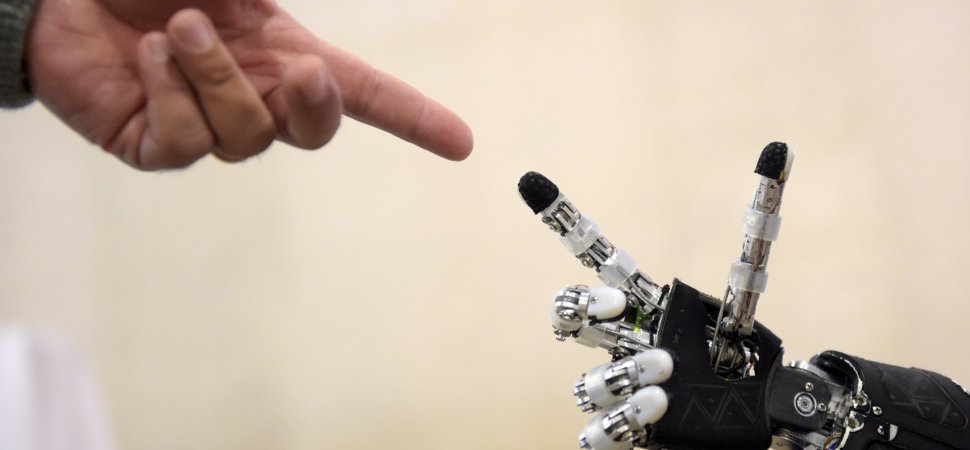
The AI debate/phenomenon rages on.
The McKinsey Global Institute just issued a report that signals a massive pending workforce transition on the same scale as the shift from agricultural to industrial jobs in the 1900"s.
Depending on the rate at which advanced and developing countries around the world embrace the surging reality of automation, McKinsey"s midpoint estimate was between 400 million and 800 million jobs could be lost to automation, with 75 million to 375 million among the displaced needing to switch occupational categories and learn new skills.
Up to one-third of the workers in the United States and Germany and an astonishing 46 percent of workers in Japan may have to change occupations by 2030 according to the report.
First, the good news within all of this.
The report indicates that there will be enough jobs to go around for everyone:
"With sufficient economic growth, innovation, and investment, there can be enough new job creation to offset the impact of automation. We also note that if history is any guide, we could expect eight to nine percent of 2030 labor demand will be in new types of occupations that have not existed before."
OK, so out with the old (jobs) and in with the new. But there"s a catch, again right from the report:
"Unlike earlier transitions, in which young people left farms and moved to cities for industrial jobs, the challenge, especially in advanced economies, will be to retrain mid-career workers. There are few precedents in which societies have successfully retrained such large numbers of people."
So there you have it.
Automation is coming like a steamroller--even conservative estimates spell a seismic shift in occupational realities. And the key to stopping massive unemployment and wage deflation is to retrain the global workforce--something there are few precedents for on this scale.
Let"s look at the winners and losers in occupations and then we"ll come back to that retraining thorn. (By the way, most of us, regardless of occupation, aren"t off the hook as the report indicated that 60 percent of occupations have at least 30 percent of their work activities highly subject to being replaced by automation).
Occupations in the U.S. hit by automation by 2030 (percent change)
- Predictable Physical Laborers -31percent (repair workers, dishwashers, food prep workers, gaming industry workers, general mechanics). This shouldn"t come as a surprise. For example, Walmart is already testing robots that clean and scrub floors in five of their stores.
- Office support -20 percent (administrative assistants, IT workers, office support workers, data collecting and processing workers)
Occupations in the U.S. surging in the face of automation by 2030 (percent change)
- Creatives +8 percent (artists, designers, entertainers, media workers)
- Technology Specialists +34 percent (Computer engineers and specialists)
- Teachers + 9 percent
- Managers and executives +15 percent
- Builders +35 percent (including engineers, architects, construction workers, etc.)
- Care providers +30 percent (doctors, nurses, physicians assistants, pharmacists, etc.)
- Professionals +11 percent (business professionals, lawyers, scientists, academics, etc.)
- Unpredictable Physical Laborers +6 percent (specialized mechanics and repair, emergency first responders, maintenance workers, etc.)
By the way, anyone working in an occupation requiring customer interaction will be about flat in terms of percentage growth/decline. (Someone has to serve us our chicken parmigiana after all.)
The report indicates that automation will expand the labor market as long as displaced workers find work within a year. The key to that is the rate of innovation companies can muster and the quality of retraining offered.
What will the workforce need to be retrained on to ensure rapid redeployment?
Things machines can"t do silly. Like managing people, applying expertise, and communicating with others. The workforce will also need to build social and emotional skills and more advanced thinking capabilities like logical reasoning and creativity.
What role will policymakers have to play? A massive one according to the report, which notes:
"During the agriculture to industrial shift, the United States made a major investment in expanding secondary education, and for the first time required all students to attend. Called the High School Movement, this raised the rate of high school enrollment of 14- to 17-year-olds from 18 percent in 1910 to 73 percent in 1940, making the US workforce among the best-educated and most productive in the world, and enabling the growth of a vibrant manufacturing sector."
So it can be done. However, the report goes on to say that over the last few decades, public and corporate spending on labor force training has rapidly declined--a trend that must reverse with governments and corporations making workforce transitions and job creation a more urgent priority.
Net--a dramatic shift is coming. But will the Rise of the Robots mean we rise, or fall?
It"s in our (very human) hands now.
No comments:
Post a Comment